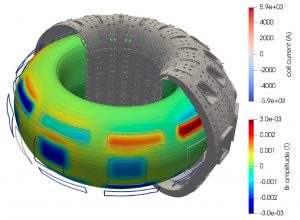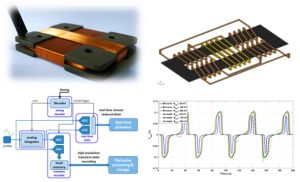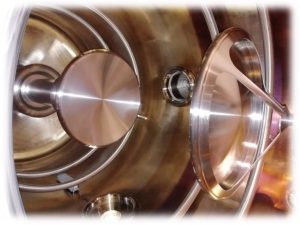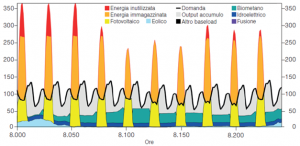
NUMERICAL METHODS FOR MAGNETIC CONFINEMENT FUSION
The plasma in a magnetic confinement fusion (MCF) experiment is a non-linear system whose dynamics is properly described by magnetohydrodynamic (MHD) equations which predict that some deviations from equilibrium may evolve as violent instabilities. In principle, MHD instabilities can be avoided by conveniently choosing the operational point, but the need to maximize fusion performance in view of power plant application usually leads the operational space near instability limits, or even beyond them in regimes that are unstable without control.The integrated design and optimization process of sophisticated electromagnetic systems, such those for the feedback control of RWMs and ELMs with in/ex-vessel nonaxisymmetric coils, in ever more complex fusion devices is increasingly demanding and requires the use of computer aided analysis by means of increasingly fast and efficient electromagnetic simulations tools.
MAGNETIC SENSORS
Magnetic field measurements are extensively used in the domain of magnetically confined fusion, plasma thruster and particle accelerator experiments. These measurements are needed both in real time, to feed-back magnetic field information for real time control of various machine systems, and for data analysis required in physics study. A measurement system for these applications has very demanding requirements: high resolution in both time and space, hundreds of kHz of bandwidth, wide dynamic range, increasingly long time acquisition and relative accuracy up to 100 ppm. A single measurement system can hardly satisfy all such challenging needs at the same time. In particular, the choice of inductive sensors is forced by the typical magnitude and frequency bandwidth of the magnetic field characterizing the phenomena of interest, along with the harsh environment where the measurement probes are often installed.


DESIGN AND TEST OF HIGH VOLTAGE COMPONENTS
The ITER experiment represents the next step in realising nuclear fusion as a viable energy source. To reach the fusion conditions and to control the plasma configuration in ITER, additional heating and current drive are provided by a combination of Neutral Beam Injectors (NBIs), Electron Cyclotron Resonance Heating and Ion Cyclotron Resonance Heating. In the dedicated ITER Neutral Beam Test Facility (NBTF) at Consorzio RFX (Italy), the operation of the ITER NBI will be tested and optimised up to full performance in two test beds: MITICA, the full-scale ITER NBI prototype with 1 MeV particle energy, and SPIDER, the full-scale prototype of the ITER NBI source, with anaccelerator up to 100 keV. The activity carried out over the years at the High Voltage Padua Test Facility (HVPTF), located at the Department of Industrial Engineering, has made it possible to guide the MITICA electrostatic accelerator project by carrying out specific tests and proofing prototypes of electrodes and insulators.
ENERGY SCENARIOS
The research activity focuses on the future role of fusion as a source of baseload CO2-free energy source. In this context we developed the CO.ME.S.E. (COsto MEdio del Sistema Elettrico – Electric System Average Cost) code, a dispatch model able to perform detailed regional power system analysis, with hourly resolution, referring to either a single country, which can be split into zones, or a group of interconnected countries. The time frame of the simulation usually spans on one solar year, but longer time intervals can be considered, if the computational capacity is accordingly increased. The code allows to define an optimal electric mix, choosing among a wide range of generation and storage technology options, including nuclear fission and fusion, together with the HV transmission grid requirements, able to ensure the power system feasibility and adequacy at the lowest average system cost, under technical and environmental constraints. For variable renewable technologies actual hourly generation profiles, as recorded by national TSOs, are considered.

